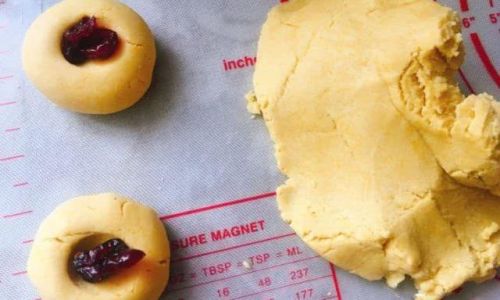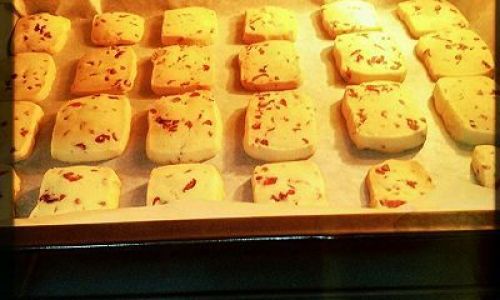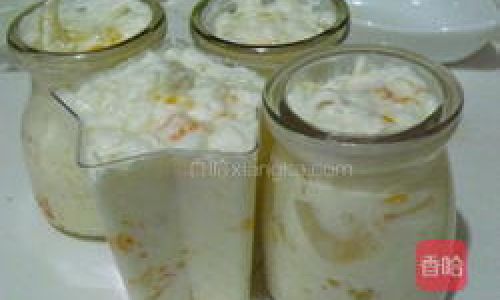Introduction
Baking cookies at home should never feel intimidating, especially when the recipe calls for ingredients you probably already have in your pantry. This tutorial is designed for beginners, busy parents, or anyone craving a sweet treat without the fuss of complicated steps or specialty tools. These oven-baked cookies are soft, chewy, and utterly irresistible—perfect with a glass of milk, a cup of coffee, or as a delightful addition to any gathering. The best part? You don’t need advanced baking skills or hours of free time. In fact, from mixing bowl to cooling rack, this recipe takes less than an hour. Let’s dive into the world of homemade cookies, where simplicity meets scrumptiousness.
Why This Recipe Works for Everyone
Before we start, let’s address the elephant in the room: “What if I mess this up?” Trust us—you won’t. This recipe is foolproof. The dough is forgiving, the ingredients are basic, and the baking time is flexible. Whether you’re a seasoned baker or someone who’s never touched a whisk, these cookies will turn out golden, buttery, and packed with flavor. Plus, there’s endless room for customization. Love chocolate? Toss in some chips. Prefer a spiced twist? Add cinnamon or nutmeg. The base recipe is a canvas for your creativity.

Ingredients You’ll Need
Let’s keep this short and sweet. Here’s everything you’ll need (with substitutions listed for accessibility):
- 1 cup (200g) granulated sugar: Or swap half with brown sugar for a caramel-like depth.
- ½ cup (115g) unsalted butter, softened: If you only have salted butter, reduce the added salt by ¼ teaspoon.
- 1 large egg: At room temperature for easier mixing.
- 1 teaspoon vanilla extract: Or almond extract for a nutty twist.
- 1½ cups (190g) all-purpose flour: For gluten-free options, use a 1:1 gluten-free baking blend.
- ½ teaspoon baking soda: This helps the cookies rise slightly.
- ¼ teaspoon salt: Enhances the flavors—don’t skip it!
- Optional add-ins: ½ cup chocolate chips, chopped nuts, dried fruit, or sprinkles.
Pro Tip: Always measure flour correctly! Spoon it into the cup and level it off with a knife to avoid dense cookies.
Equipment Checklist
You don’t need a stand mixer or fancy gadgets. Here’s the minimalist baker’s toolkit:
- Mixing bowls (one large, one medium).
- Whisk or electric hand mixer (a fork works in a pinch!).
- Baking sheet: Line it with parchment paper for easy cleanup.
- Cookie scoop or spoon: For perfectly portioned dough balls.
- Cooling rack: Prevents soggy bottoms!
Step-by-Step Instructions
Prep Your Workspace
Preheat the oven to 350°F (175°C). This might seem basic, but preheating ensures even baking. While the oven warms up, line your baking sheet with parchment paper. No parchment? Lightly grease the pan with butter or cooking spray.
Cream the Butter and Sugar
In a large mixing bowl, combine the softened butter and granulated sugar. Use a whisk or electric mixer on medium speed until the mixture is light, fluffy, and pale yellow—about 2-3 minutes. Scrape down the sides of the bowl with a spatula halfway through to ensure even mixing.
Why does this matter? Creaming incorporates air into the dough, creating a tender texture.
Add the Egg and Vanilla
Crack the egg into a small bowl to check for shells, then pour it into the butter-sugar mixture. Add the vanilla extract. Mix on low speed until just combined. Overmixing here can make the cookies tough, so stop as soon as the egg is fully incorporated.
Combine Dry Ingredients
In a medium bowl, whisk together the flour, baking soda, and salt. This step distributes the leavening agent (baking soda) evenly, preventing bitter pockets in your cookies.
Mix Wet and Dry Ingredients
Gradually add the dry ingredients to the wet mixture, mixing on low speed until no streaks of flour remain. The dough will be thick and slightly sticky. If it feels too stiff, add a teaspoon of milk; if it’s too wet, sprinkle in a tablespoon of flour.
Fold in Add-Ins (Optional)
Gently stir in your choice of chocolate chips, nuts, or other mix-ins. For even distribution, use a spatula to fold them in by hand rather than the mixer.
Shape the Dough
Use a cookie scoop or a tablespoon to portion the dough into 1.5-inch balls. Place them 2 inches apart on the prepared baking sheet—they’ll spread a bit! If you prefer flatter cookies, press the dough balls lightly with your palm. For chunkier cookies, leave them as-is.

Bake to Perfection
Slide the baking sheet into the preheated oven and bake for 8-12 minutes. The cookies are done when the edges are golden brown, but the centers still look soft. Resist the urge to overbake! They’ll firm up as they cool.
Cool and Enjoy
Let the cookies rest on the baking sheet for 5 minutes before transferring them to a cooling rack. This allows them to set without breaking. Once cooled, store them in an airtight container for up to 5 days… if they last that long!
Troubleshooting Common Issues
-
My cookies spread too much!
Chill the dough for 30 minutes before baking. Cold dough resists spreading. -
They’re too pale!
Increase the oven temperature by 25°F (15°C) next time, or bake for 1-2 minutes longer. -
The centers are doughy!
Underbaking is common in oven recipes. Use a timer and check for visual cues like golden edges.
Creative Variations to Try
- Lemon Poppy Seed: Add 1 tablespoon lemon zest and 1 teaspoon poppy seeds to the dough.
- Peanut Butter Lovers: Substitute ¼ cup of butter with creamy peanut butter.
- Oatmeal Raisin: Replace ½ cup flour with rolled oats and add ½ cup raisins.
- Spiced Chai: Mix in 1 teaspoon cinnamon, ½ teaspoon ginger, and a pinch of cardamom.
Storage and Freezing Tips
- Room Temperature: Store cookies in an airtight container with a slice of bread to maintain softness. The bread absorbs excess moisture.
- Freezer-Friendly Dough: Scoop dough balls onto a baking sheet, freeze until solid, then transfer to a freezer bag. Bake directly from frozen—add 2-3 minutes to the baking time.
- Reheating: For that fresh-from-the-oven taste, microwave cookies for 10-15 seconds or warm them in a 300°F (150°C) oven for 3-4 minutes.
The Science Behind Simple Cookies
Baking is part art, part science. Let’s break down the key players:
- Butter: Provides flavor and tenderness. Softened butter creams easily with sugar, creating air pockets.
- Sugar: Not just sweet—it caramelizes during baking, giving cookies their golden color and crisp edges.
- Baking Soda: A chemical leavener that reacts with acidic ingredients (like brown sugar) to create carbon dioxide, making cookies rise.
- Flour: The structure-builder. All-purpose flour has the right protein content for chewy cookies without being too tough.
Why Oven Baking is Beginner-Friendly
Unlike stovetop recipes that demand constant stirring, oven baking is hands-off. Once the dough is shaped, the oven does the work. This makes it ideal for multitaskers or those new to baking. Plus, ovens provide consistent heat, reducing the risk of burnt bottoms or raw centers.
Final Thoughts
There’s something deeply satisfying about baking cookies from scratch. The smell of vanilla and butter wafting through your kitchen, the pride of serving something homemade—it’s an experience worth sharing. This recipe strips away the complexity, leaving you with a reliable, delicious foundation to build upon. Whether you stick to the classic version or experiment with flavors, these cookies are a testament to the joy of simple baking.
So, preheat that oven, grab your apron, and get ready to impress. No one needs to know how easy it was. Your secret’s safe with us.
Happy Baking! 🍪✨






0 comments